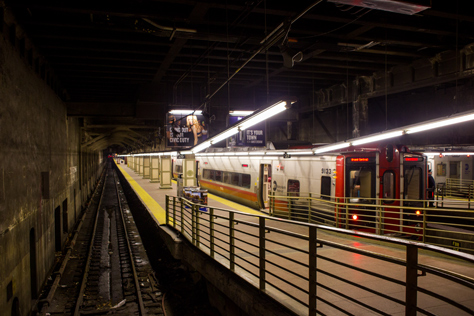
North side upper level platform for Track 26 and Track 25 at Grand Central Terminal (1913) and Metro-North Commuter Railroad Kawasaki M8 railcar 9133.
89 East 42nd Street, New York, New York: 24 January 2014
part of the Grand Central Terminal album

North side upper level platform for Track 26 and Track 25 at Grand Central Terminal (1913) and Metro-North Commuter Railroad Kawasaki M8 railcar 9133.
89 East 42nd Street, New York, New York: 24 January 2014
part of the Grand Central Terminal album
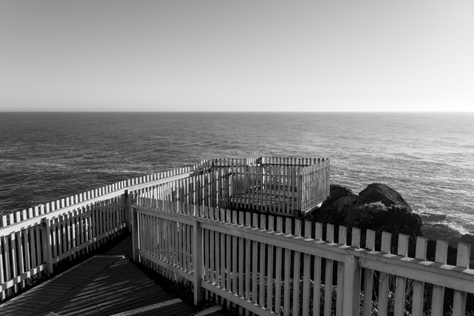
A small wooden platform extending south onto the edge of the rocky promontory upon which the Pigeon Point Lighthouse (1871) is built.
210 Pigeon Point Road, Pescadero, California: 30 January 2013
part of the Pacific Coast Highway album
The entire area around Pigeon Point Light Station State Historic Park is strikingly beautiful. Although there are many picturesque spots here, a particular highlight is the wooden platform that extends south onto the rocky promontory.
From this platform, the purpose of which is apparently to wow visitors like me, there are unobstructed views of the Pacific Ocean, coastline and the Pigeon Point Lighthouse (1871) itself. It is not at all rickety, but I would not want to be out there with loads of other people because of its small size.
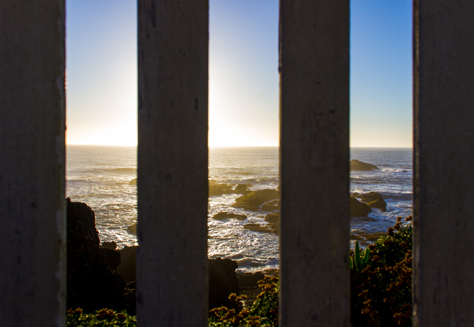
There were few people around this day, so Marc and I had the platform to ourselves. It would be a good spot to watch marine life like whales and dolphins that are known to frequent the area during certain times of year. Sitting on a nearby bench to the north about twenty minutes later, we did spot a whale surfacing for air not far from shore.
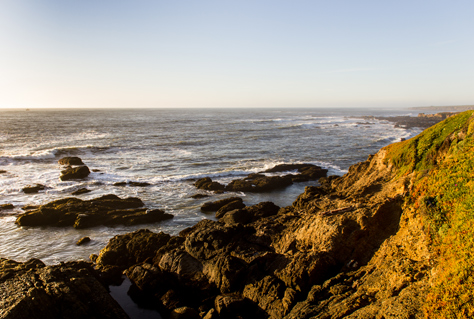
The rocky shallows surrounding Pigeon Point claimed the clipper ship Carrier Pigeon (1852) on June 6, 1853 when it ran aground about 500 feet offshore. Captain Azariah Doane and his crew abandoned ship and made it safely to shore, but the vessel and most of its cargo were a loss. The promontory was thereafter called Pigeon Point for that ship.
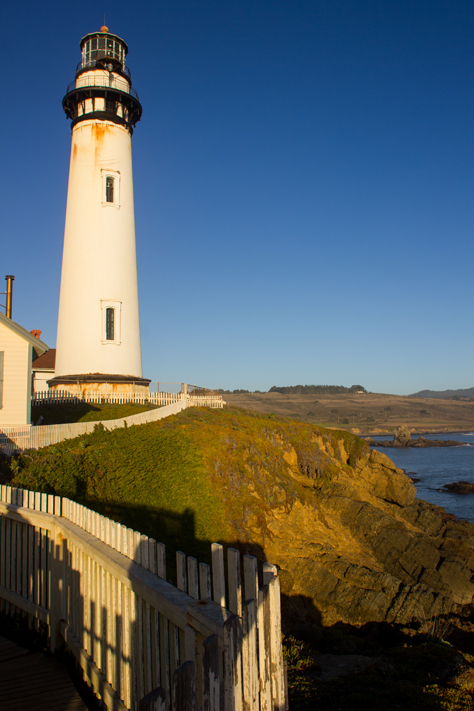
The Pigeon Point fog signal first sounded on September 10, 1871 and had four iterations through 1976: steam whistle, fog siren, two-tone diaphone and single-note diaphragm. The five-wick lard oil lamp and 1,008 prism, first-order Fresnel lens operated from November 15, 1872 until automation in 1974.

Bluejacket spiderwort (Tradescantia ohiensis) flowers along the Bolen Bluff Trail in Paynes Prairie Preserve State Park.
Bolen Bluff Trail, Paynes Prairie Preserve State Park, Micanopy, Florida: 16 February 2013
part of the Paynes Prairie Preserve State Park album
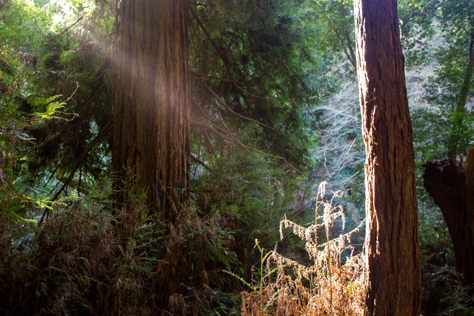
A ray of light shines through the giant redwood (Sequoia sempervirens) forest at Muir Woods National Monument.
Near 1 Muir Woods Road, Marin County, California: 29 January 2013
part of the Muir Woods album

A diorama on display inside the Visitor Center at Muir Woods National Monument.
1 Muir Woods Road, Marin County, California: 29 January 2013
part of the Muir Woods album